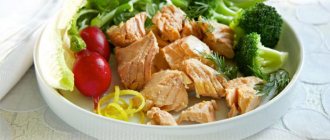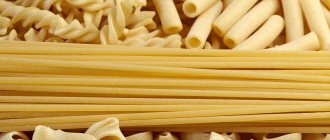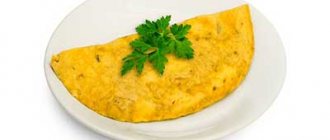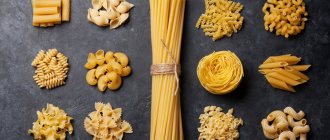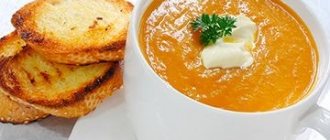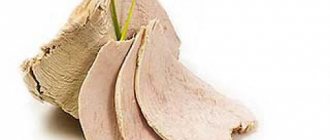Recipe? Recipe!
How to properly prepare this dish? There are many recipes, each housewife has her own. Here is one of them:
Products:
- Zucchini - 1 piece.
- Bell pepper - 1 piece.
- Rice - 2 cups.
- Tomatoes (in their own juice) - 800 gr.
- Carrots - 1 piece.
- Broccoli - 100 gr.
- Green peas - 80 gr.
- Beans (green) - 60 gr.
- Vegetable oil (olive) - 2 tablespoons
- Garlic - 1-2 cloves
- Parsley – 1 bunch
- Pepper (black, ground) and salt - to taste
The garlic is crushed and fried in olive oil. Onions, bell peppers, zucchini, carrots, broccoli and beans are all chopped. Fry it a little and add green peas. Then pour in ½ cup of boiled water and let half of the liquid evaporate. The rice is cooked until half cooked and added to the vegetables. Salt and add a small amount of black pepper. Sprinkle chopped parsley on top. Simmer everything for 5-7 minutes. After this, tomatoes are placed in the dish, with the skins removed in advance. Simmer everything until done, wait until it cools down.
Calorie content of the dish
How many calories are in rice with vegetables in a pan or in a stew depends a little on what type of cereal you use. The number of calories is even partly influenced by where the rice was grown and under what weather conditions. Let's consider how many calories different varieties of this product contain in dry form in an amount of 100 g:
long grain rice with beneficial properties and calorie content of 360 kcal; round rice, amounting to 350 kcal; Unpolished rice – 280 kcal.
It is important to note that after cooking, rice swells, and 100 g increases to 300 g of the finished dish, but the calorie content does not change. Accordingly, 100 g of boiled risk contains 120-140 kcal. The most useful is the unrefined one.
Now let's figure out how many calories are in rice boiled with vegetables. Of course, the calorie content of the product in this case is slightly reduced, but provided that you do not add oil to the dish.
How many calories are in boiled rice with vegetables is especially interesting for people on a diet, since in this case there are usually strict restrictions. On average, the nutritional value of rice with vegetables is 80-90 kcal per 100 g of finished dish. When using eggs when preparing a dish, the nutritional value will rise to 110-120 kcal for the same amount.
Recipe with vegetables and egg
A delicious and easy to make vegetable and egg fried rice recipe. This Chinese dish, in addition to 100 g of rice, includes the following ingredients:
green pea; carrot; corn; Bell pepper.
Recipe Rice with vegetables. Calorie, chemical composition and nutritional value.
Nutritional value and chemical composition of “Rice with vegetables”.
The table shows the nutritional content (calories, proteins, fats, carbohydrates, vitamins and minerals) per 100 grams of edible portion.
| Nutrient | Quantity | Norm** | % of the norm in 100 g | % of the norm in 100 kcal | 100% normal |
| Calorie content | 134.1 kcal | 1684 kcal | 8% | 6% | 1256 g |
| Squirrels | 2.2 g | 76 g | 2.9% | 2.2% | 3455 g |
| Fats | 4 g | 56 g | 7.1% | 5.3% | 1400 g |
| Carbohydrates | 22.2 g | 219 g | 10.1% | 7.5% | 986 g |
| Alimentary fiber | 1.4 g | 20 g | 7% | 5.2% | 1429 g |
| Water | 68.9 g | 2273 g | 3% | 2.2% | 3299 g |
| Ash | 0.807 g | ~ | |||
| Vitamins | |||||
| Vitamin A, RE | 106.5 mcg | 900 mcg | 11.8% | 8.8% | 845 g |
| beta carotene | 0.639 mg | 5 mg | 12.8% | 9.5% | 782 g |
| Vitamin B1, thiamine | 0.03 mg | 1.5 mg | 2% | 1.5% | 5000 g |
| Vitamin B2, riboflavin | 0.017 mg | 1.8 mg | 0.9% | 0.7% | 10588 g |
| Vitamin B4, choline | 23.04 mg | 500 mg | 4.6% | 3.4% | 2170 g |
| Vitamin B5, pantothenic | 0.135 mg | 5 mg | 2.7% | 2% | 3704 g |
| Vitamin B6, pyridoxine | 0.073 mg | 2 mg | 3.7% | 2.8% | 2740 g |
| Vitamin B9, folates | 6.151 mcg | 400 mcg | 1.5% | 1.1% | 6503 g |
| Vitamin C, ascorbic acid | 0.75 mg | 90 mg | 0.8% | 0.6% | 12000 g |
| Vitamin E, alpha tocopherol, TE | 1.801 mg | 15 mg | 12% | 8.9% | 833 g |
| Vitamin H, biotin | 1.13 mcg | 50 mcg | 2.3% | 1.7% | 4425 g |
| Vitamin K, phylloquinone | 0.9 mcg | 120 mcg | 0.8% | 0.6% | 13333 g |
| Vitamin RR, NE | 1.0249 mg | 20 mg | 5.1% | 3.8% | 1951 |
| Niacin | 0.514 mg | ~ | |||
| Macronutrients | |||||
| Potassium, K | 61.17 mg | 2500 mg | 2.4% | 1.8% | 4087 g |
| Calcium, Ca | 10.76 mg | 1000 mg | 1.1% | 0.8% | 9294 g |
| Silicon, Si | 30.032 mg | 30 mg | 100.1% | 74.6% | 100 g |
| Magnesium, Mg | 18.52 mg | 400 mg | 4.6% | 3.4% | 2160 g |
| Sodium, Na | 151.92 mg | 1300 mg | 11.7% | 8.7% | 856 g |
| Sera, S | 22.23 mg | 1000 mg | 2.2% | 1.6% | 4498 g |
| Phosphorus, P | 52.9 mg | 800 mg | 6.6% | 4.9% | 1512 g |
| Chlorine, Cl | 236.55 mg | 2300 mg | 10.3% | 7.7% | 972 g |
| Microelements | |||||
| Aluminium, Al | 324 mcg | ~ | |||
| Bor, B | 69.9 mcg | ~ | |||
| Vanadium, V | 47.44 mcg | ~ | |||
| Iron, Fe | 0.432 mg | 18 mg | 2.4% | 1.8% | 4167 g |
| Yod, I | 0.87 mcg | 150 mcg | 0.6% | 0.4% | 17241 g |
| Cobalt, Co | 1.087 mcg | 10 mcg | 10.9% | 8.1% | 920 g |
| Lithium, Li | 1.728 mcg | ~ | |||
| Manganese, Mn | 0.3915 mg | 2 mg | 19.6% | 14.6% | 511 g |
| Copper, Cu | 92.1 mcg | 1000 mcg | 9.2% | 6.9% | 1086 g |
| Molybdenum, Mo | 2.452 mcg | 70 mcg | 3.5% | 2.6% | 2855 g |
| Nickel, Ni | 1.464 mcg | ~ | |||
| Rubidium, Rb | 62.5 mcg | ~ | |||
| Selenium, Se | 4.297 mcg | 55 mcg | 7.8% | 5.8% | 1280 g |
| Strontium, Sr | 1.17 mcg | ~ | |||
| Titanium, Ti | 5.61 mcg | ~ | |||
| Fluorine, F | 60.88 mcg | 4000 mcg | 1.5% | 1.1% | 6570 g |
| Chromium, Cr | 0.89 mcg | 50 mcg | 1.8% | 1.3% | 5618 g |
| Zinc, Zn | 0.5378 mg | 12 mg | 4.5% | 3.4% | 2231 g |
| Zirconium, Zr | 2.47 mcg | ~ | |||
| Digestible carbohydrates | |||||
| Starch and dextrins | 20.464 g | ~ | |||
| Mono- and disaccharides (sugars) | 1.6 g | max 100 g | |||
| Glucose (dextrose) | 0.336 g | ~ | |||
| Maltose | 0.048 g | ~ | |||
| Sucrose | 1.156 g | ~ | |||
| Fructose | 0.233 g | ~ | |||
| Essential amino acids | 0.055 g | ~ | |||
| Arginine* | 0.166 g | ~ | |||
| Valin | 0.123 g | ~ | |||
| Histidine* | 0.05 g | ~ | |||
| Isoleucine | 0.1 g | ~ | |||
| Leucine | 0.183 g | ~ | |||
| Lysine | 0.083 g | ~ | |||
| Methionine | 0.047 g | ~ | |||
| Methionine + Cysteine | 0.088 g | ~ | |||
| Threonine | 0.074 g | ~ | |||
| Tryptophan | 0.031 g | ~ | |||
| Phenylalanine | 0.111 g | ~ | |||
| Phenylalanine+Tyrosine | 0.197 g | ~ | |||
| Nonessential amino acids | 0.12 g | ~ | |||
| Alanin | 0.12 g | ~ | |||
| Aspartic acid | 0.168 g | ~ | |||
| Glycine | 0.097 g | ~ | |||
| Glutamic acid | 0.378 g | ~ | |||
| Proline | 0.098 g | ~ | |||
| Serin | 0.098 g | ~ | |||
| Tyrosine | 0.086 g | ~ | |||
| Cysteine | 0.042 g | ~ | |||
| Sterols (sterols) | |||||
| beta sitosterol | 13.084 mg | ~ | |||
| Saturated fatty acids | |||||
| Saturated fatty acids | 0.5 g | max 18.7 g | |||
| 14:0 Miristinovaya | 0.003 g | ~ | |||
| 16:0 Palmitinaya | 0.282 g | ~ | |||
| 18:0 Stearic | 0.164 g | ~ | |||
| 20:0 Arakhinovaya | 0.011 g | ~ | |||
| 22:0 Begenovaya | 0.026 g | ~ | |||
| Monounsaturated fatty acids | 0.979 g | min 16.8 g | 5.8% | 4.3% | |
| 18:1 Oleic (omega-9) | 0.976 g | ~ | |||
| Polyunsaturated fatty acids | 2.483 g | from 11.2 to 20.6 g | 22.2% | 16.6% | |
| 18:2 Linolevaya | 2.289 g | ~ | |||
| Omega-6 fatty acids | 2.3 g | from 4.7 to 16.8 g | 48.9% | 36.5% |
The energy value of Rice with vegetables is 134.1 kcal.
Primary Source: Created in the application by the user. Read more.
** This table shows the average levels of vitamins and minerals for an adult. If you want to know the norms taking into account your gender, age and other factors, then use the “My Healthy Diet” application.
Beneficial features
- It contains about 80% complex carbohydrates, so it should be included in the diet of those who want to lose weight. Carbohydrates tend to accumulate in muscles and provide a long-term flow of energy into muscle tissue.
- It contains almost no salt, so it is recommended for use by people with kidney diseases and disorders of the cardiovascular system.
- Potassium contained in rice neutralizes the aggressive effects of salt, which enters the body with other foods and removes its excess. This helps remove excess fluid from the body and improve metabolism.
- Does not contain gluten, a vegetable protein that can cause a severe allergic reaction.
- It is a source of B vitamins (B1, B2, B3, B5, B6, B9), which stimulate the functioning of the nervous, cardiovascular, digestive and endocrine systems, and vitamins E, PP, H.
- Has enveloping properties. Once in the digestive system, rice gluten gently envelops the walls of the stomach and esophagus. Therefore, the product is useful for people suffering from ulcers, gastritis and high acidity.
Macro- and microelements contained in rice (per 100 g)
- Calcium (40 mg).
- Magnesium (116 mg).
- Sodium (30 mg).
- Potassium (314 mg).
- Phosphorus (328 mg).
- Chlorine (133 mg).
- Sulfur (60 mg).
- Iron (2.1 mg).
- Zinc (1.8 mg).
- Iodine (2.3 mcg).
- Copper (560 mcg).
- Manganese (3.63 mg).
- Selenium (20 mcg).
- Chromium (2.8 mcg).
- Fluoride (80 mcg).
- Molybdenum (26.7 mcg).
- Boron (224 mcg).
- Vanadium (400 mcg).
- Silicon (1240 mg).
- Cobalt (6.9 mcg).
- Aluminum (912 mcg).
- Nickel (51.6 mcg).
Brown rice: calories, benefits and harm
To obtain brown rice, only the yellow outer skin is removed from the grains. This way the bran shells remain on them. They not only provide a nutty aroma and characteristic pleasant taste, but also contain beneficial substances.
The composition of rice includes so-called slow carbohydrates, which are a valuable source of energy for the body. It's high in fiber and gluten-free. Unrefined grain is also rich in B vitamins, folic acid, and manganese.
The calorie content of rice is 337 kcal per 100 grams of raw product. After cooking, it decreases by about three times.
Preparation
To prepare vegetables with rice as a side dish, first of all begin to prepare the cereal. To do this, pour hot water over the grains and leave for 10 minutes. Small debris that floats to the surface of the water must be removed.
While the cereal is brewing, peel the onion and garlic and finely chop it. To make the garlic easier to peel, it is pressed down with the wide side of the knife blade.
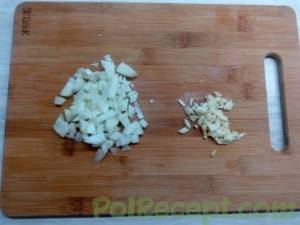
The carrots are peeled and cut into cubes, rings or half rings.
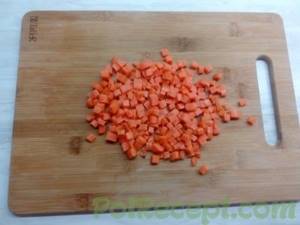
Pour sunflower oil into a heated frying pan, add garlic and onions. Fry the ingredients over medium heat for 2 minutes, remembering to stir constantly.
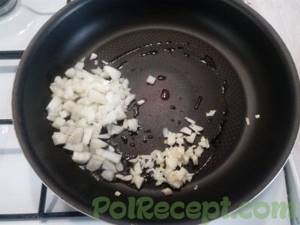
Then place the carrots in the pan and continue sautéing for about 3 minutes.
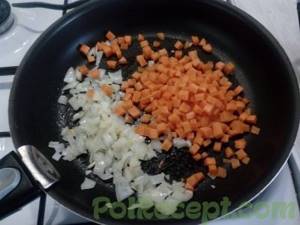
At this time, cut the pepper into small pieces. A dish with the addition of peppers of several colors will look especially beautiful.
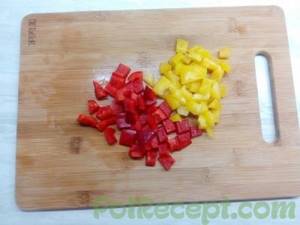
Chopped peppers and green beans are added to the frying pan. Beans can be used frozen.
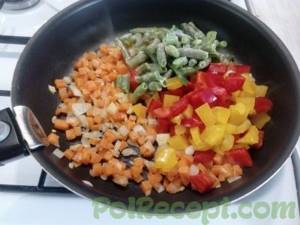
To make the side dish crumbly, the cereal is washed several times until the liquid remains clear. The washed grains are placed in a colander.
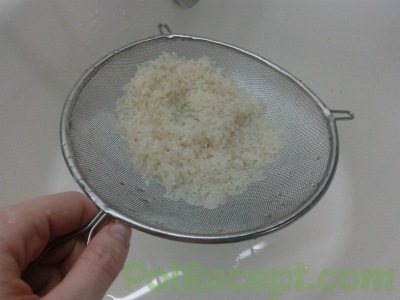
To prepare rice with vegetables as a side dish, you can first boil the cereal and then add it to the sautéed vegetables. However, the dish will turn out tastier and more aromatic if the rice is cooked together with vegetables, because in this case all the juices of the vegetables will be deeply absorbed into the grains. After adding the washed cereal, add salt to the pan and mix all the ingredients.
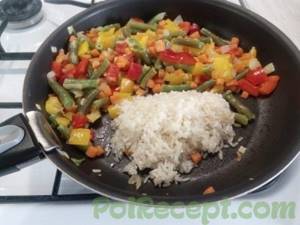
The contents of the pan are leveled and filled with water. After the liquid boils, reduce the heat and cover the dish with a lid. Cook rice and vegetables in a frying pan for another 15 minutes until the liquid evaporates.
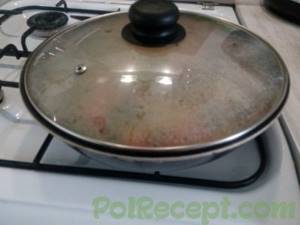
The finished dish is allowed to brew under a closed lid for some more time.
Calorie content of rice

Rice is loved and appreciated all over the world. This grain is very nutritious and goes well with spicy, sour, sweet and salty foods. Therefore, both simple and exotic dishes are prepared from different varieties of rice: side dishes, soups, salads, desserts, etc. In addition, diets and fasting days on rice are popular. But, like any product, it contains calories, the consumption of which should be controlled to maintain slimness.
Cooking tips
To prepare a crumbly side dish, preference should be given to long-grain rice. Such cereals absorb a moderate amount of liquid, so they do not boil too much. If there is no long-grain variety available, short-grain parboiled rice will do. Pre-treatment of grains with steam prevents them from sticking together during cooking.
To prepare the side dish, you should choose a frying pan with a thick bottom, for example, cast iron. The good thing about such dishes is that when heated, the temperature is distributed evenly over the entire surface, so the food does not burn.
While cooking cereals, it is not recommended to remove the lid from the pan and stir the ingredients. If the integrity of the grains is damaged, starch will be released, which can make the dish sticky.
Salt is added to the dish in such an amount that the liquid in which the cereal will be cooked tastes a little saltier than the taste of the finished side dish.
To make the dish even tastier, you can use chicken or meat broth instead of water. The broth-based dish can be served not only as a side dish, but also as an independent dish. However, do not forget that the caloric content in this case will increase.
Energy value (per 100 g)
White. The grains undergo all stages of grinding, so they lose some of their beneficial properties (unlike unpolished grains). It is quick to prepare and most common in cooking. White rice contains 344 kcal.
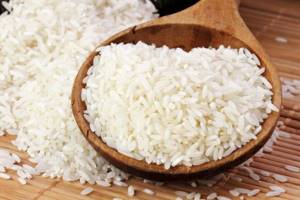
Unsanded brown (brown). It is considered the most useful variety, since it is peeled only from the outer husk, preserving all the bran and nutrients. Unpolished rice removes cholesterol, stabilizes blood circulation, improves kidney function and normalizes water balance in the body. The calorie content of brown rice is 337 kcal.
Wild. It contains an almost complete list of proteins necessary for the human body (about 15 g of proteins per 100 g). Regular consumption of wild rice strengthens the muscular system, improves metabolic processes, and stimulates the functioning of the immune and digestive systems. Calorie content - 101 kcal.
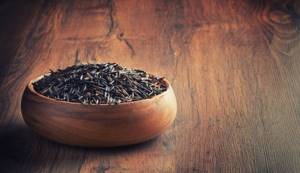
Red. It has a low glycemic index (55), which allows it to be consumed by people suffering from diabetes. Red rice contains fiber, which improves digestion, adsorbs fats, lowers cholesterol levels in the blood and stimulates intestinal motility. In addition, it contains anthocyanins, which are powerful antioxidants. They slow down the aging process and prevent the occurrence of cancerous tumors. Calorie content of red rice is 362 kcal.
Long grain. Long-grained are those varieties of cereals whose grains reach 6 mm or more in length. Due to its high fiber content, it is very beneficial for the gastrointestinal tract. The calorie content of long grain rice is 365 kcal.
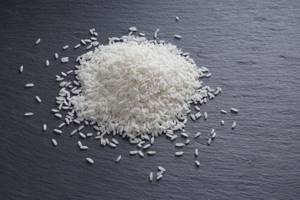
Basmati. Contains fiber and amylase, which improves the functioning of the pancreas. The energy value of basmati rice is 342 kcal.
Steamed. Steaming is a technology that allows you to improve the quality characteristics of rice cereals. When steamed, vitamins and minerals from the shells are transferred to the grains, and starch is destroyed, which is why this rice becomes more crumbly. Calorie content of steamed rice is 341 kcal.
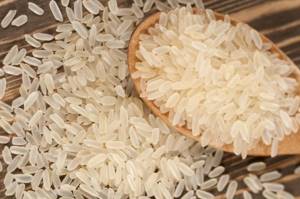
Air. Calorie content of puffed rice is 402 kcal. This is a good option for a hearty and healthy breakfast. Since puffed rice contains high amounts of fiber and protein, such a breakfast will provide a long-lasting feeling of fullness.
For sushi. You can prepare it yourself from round grain (for this you will need rice vinegar and nori seaweed), or buy ready-made. The calorie content of rice for sushi is 330 - 350 kcal.

The calorie content of 100 g of raw and 100 g of cooked rice differs significantly due to the fact that during cooking the grains absorb water. Accordingly, the mass increases. Thus, 100 g of boiled white rice without additives contains only 116 calories, 100 g of boiled brown rice has a calorie content of 110 calories, 100 g of boiled unpolished rice contains 125 calories, and 100 g of boiled wild rice contains only 78 calories. As a rule, salt, butter, raisins are added to rice or boiled in milk. To calculate the calorie content of supplements, consider the amount of ingredients. If this concerns milk, pay attention to its fat content. Salt will not add calories, since its energy value is zero. But a large amount of salt can provoke fluid retention in the body and, as a result, stress on the kidneys and swelling. 100 g of butter contains 748 calories. By adding only 3 g of butter to a dish, you will increase its calorie content by 23 calories. If you like rice with raisins, remember: the calorie content of 100 g of raisins is 264 calories. 15 g of raisins will increase the calorie content of your dish by 40 calories, and 1 teaspoon of sugar - by 16. If you cook rice porridge in milk (2.5% fat) without additives, its calorie content will be 110 calories per 100 g.
